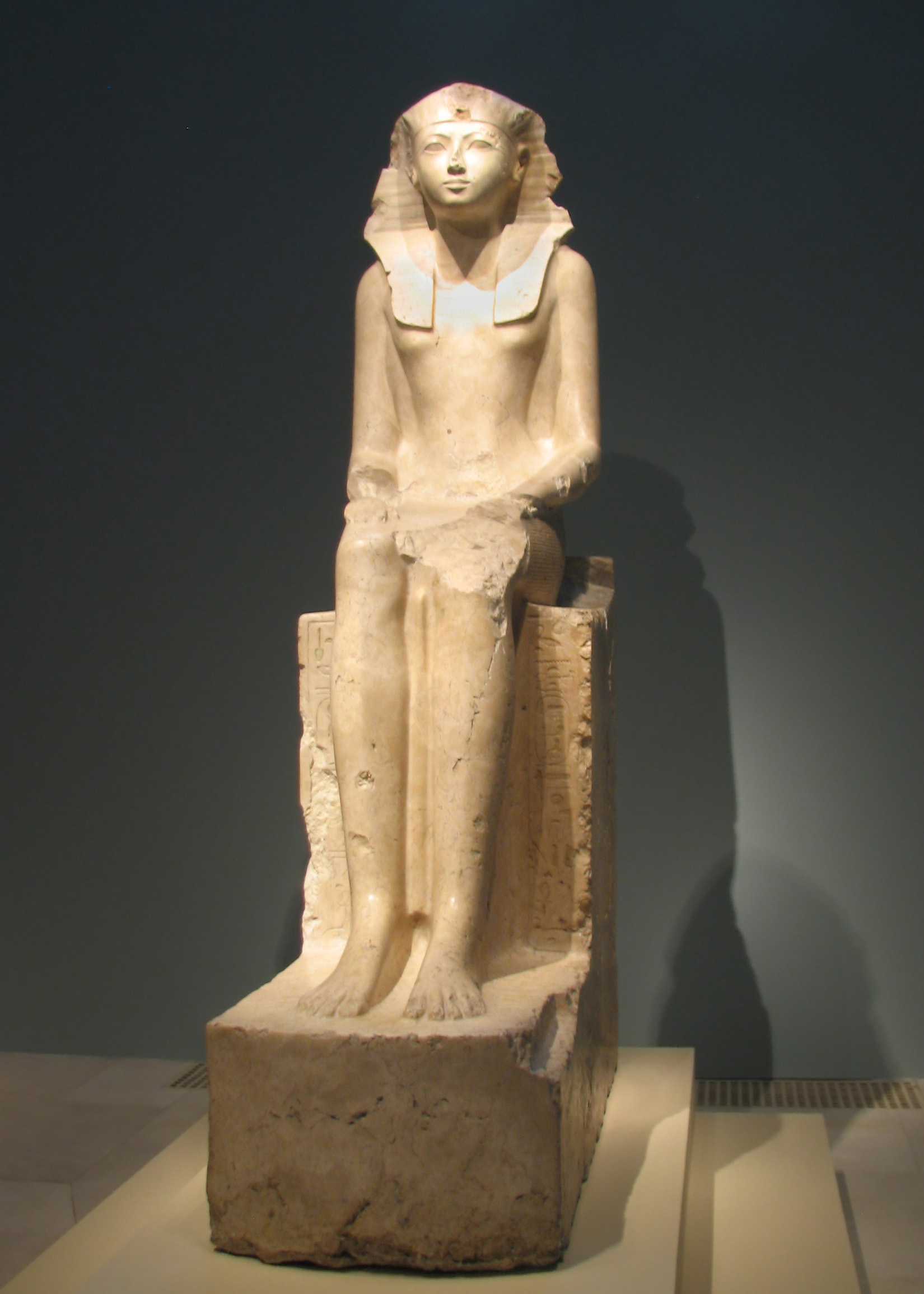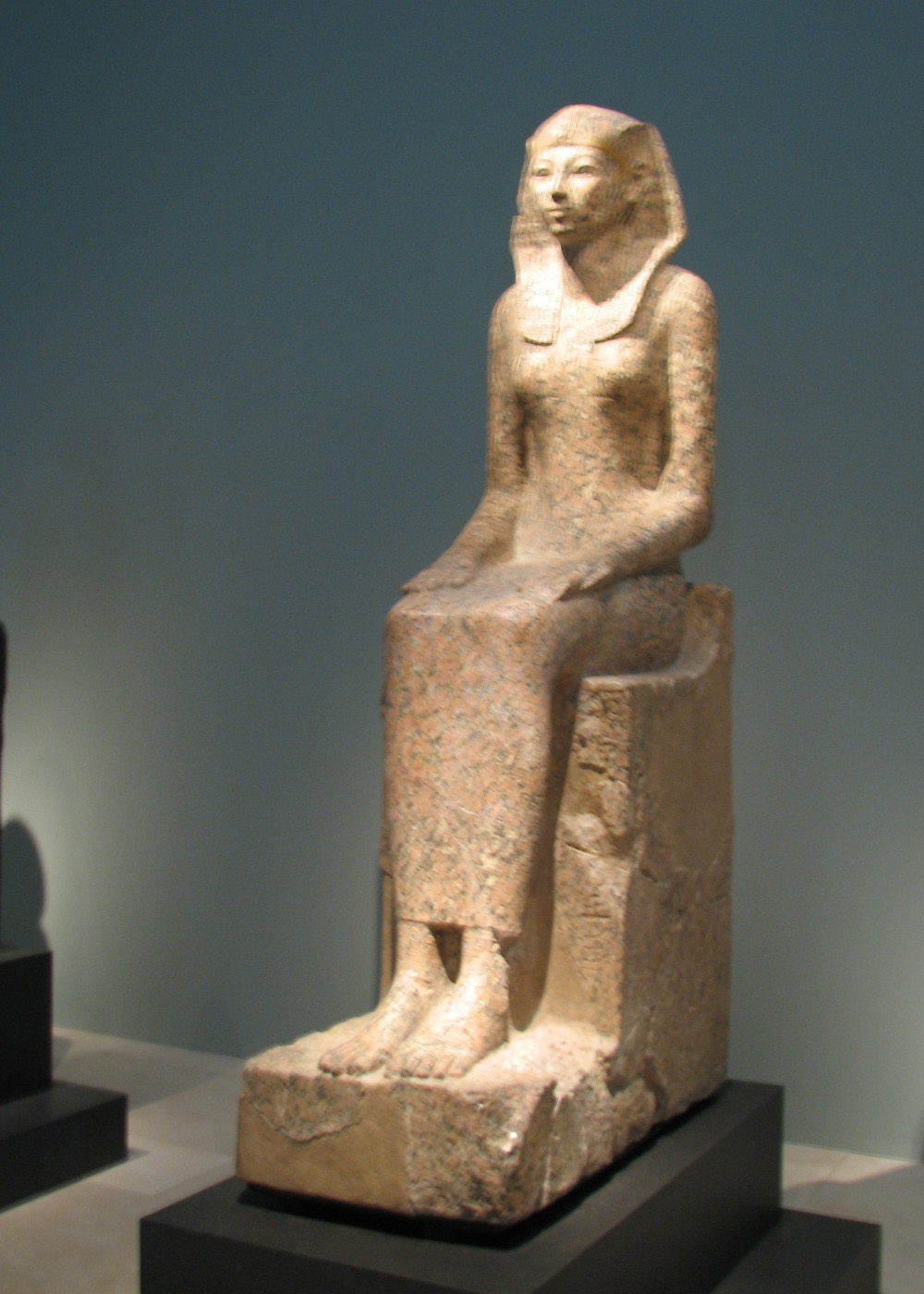This statue travels between the Met and Leiden museums. Mr. Koopman captured it during its sojourn at the Rijksmuseum van Oudheden.
(From Museum website)
"This graceful, life-size statue depicts Hatshepsut in female attire, but she wears the nemes headcloth, a royal attribute usually reserved for the reigning king. In the columns of text inscribed beside her legs on the front of the throne, she has already adopted the throne name Maatkare, but her titles and epithets are still feminine. Thus, she is Lady of the Two Lands and Bodily Daughter of Re. On the back of the throne, part of an unusual and enigmatic scene is preserved. At the left is the goddess Ipi, a protective deity depicted as a pregnant hippopotamus with feline legs who wears a crocodile draped across her head and down her back and carries knives. This goddess was the protector of pregnant women and of children and thus would have been associated with the reigning queen. This mixture of attributes belonging to king and queen suggests that the statue comes from the time when Hatshepsut was making the transition from queen regent to coruler with her nephew Tuthmosis III.
"In the early 1920s the Museum's Egyptian Expedition excavated numerous fragments of the statue near Hatshepsut's temple at Deir el-Bahri in western Thebes. The torso, however, had been found in 1869 and was in the Rijksmuseum van Oudheden in Leiden. A recent loan has allowed the pieces to be reunited for the first time since the statue was destroyed in about 1460 B.C.E."
"Some years after Hatshepsut's death, late in his reign, Thutmose III ordered her name and image erased whenever found; the names of her father, Thutmose I, and her husband, Thutmose II, replaced hers. Her statues and the avenue of sphinxes at Deir el Bahri were smashed to pieces and thrown into pits and gullies. Her obelisks were bricked up amd her buildings at Karnak dismantled. The proscribing of her name and image occurred throughout Egypt. There are many theories as to the cause of what has been described as a damnatio memoriae and as to why it was twenty years in coming."(From _The Encylopedia of the Egyptian Pharoahs_ by Darrell D. Baker, page 110)








